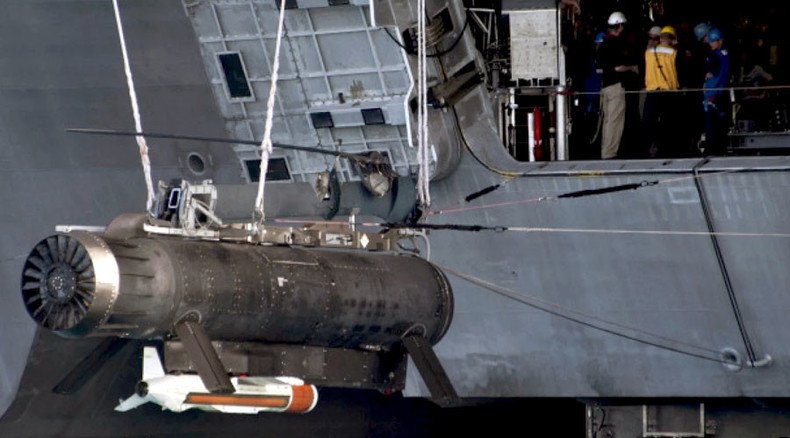Pentagon wasted over $700 million on ineffective minehunting system

A $700 million minehunting system which has been 16 years in the making has consistently failed to meet the US Navy’s own performance standards, according to a new report.
The Remote Minehunting System (RMS) started development in the late ‘90s, and was meant to provide the Navy with a safe way to navigate minefields. The RMS would be dropped off a ship so it could scan the area to send information of hazards back to ships in real-time, helping the parent ship to avoid or destroy the seaborne mines.
But 16 years and $706 million later, it’s clear that not everything has gone according to plan.
The report, titled “America’s Most Wasted,” spearheaded by Sen John McCain, slammed the RMS project as “the epitome of wasteful acquisitions and spending.” The Navy delivered half the planned number of minehunters at double the projected unit cost.
And to add insult to injury, the devices don’t even work.
Pentagon wasted $15mn on Afghan warehouse it never used http://t.co/D8AFDUpeKYpic.twitter.com/m9UqfFpjJn
— RT America (@RT_America) July 22, 2015In 2007, the RMS tested so badly that the program manager scrapped after only six days, because the system was not working reliably enough to even attempt a test. This unreliability followed the system even after a 2008 redesign, and the Navy opted for assessments “on paper” in lieu of an actual functional tests. Despite abysmal past performance and not testing the new design to see if it worked, the Navy went on buy another unit for $13 million.
“By 2009, RMS costs had grown 80 percent in a significant violation of acquisition rules, known as a Nunn-McCurdy breach. It had also become quite clear that the Navy did not plan to use RMS on the destroyers anymore, even though it had already paid to outfit them,” the report noted.
To date, the RMS still does not function fully. A Government Accountability Office (GAO) report in 2013 said that that the device’s sonar couldn’t detect certain mines, and wrongly identified other objects as mines.
Fast forward to 2015 and the minehunter has issues communicating with its parent ship and it still has trouble detecting mines. Perhaps most damning is the independent Department of Operational Test and Evaluation (DOT&E) noting that there is “no performance data to date to suggest that the [RMS] will eventually achieve [its] requirements.”
Pentagon’s F-35 stealth jet can’t win dogfight – report http://t.co/kH0e0cqLmSpic.twitter.com/Y92sLeKSaB
— RT America (@RT_America) June 30, 2015Despite this failure on all fronts and despite already sinking $706 million on the project, the Navy has repeatedly asked Congress for more funds to buy more RMS units before they are even made to work. The request indicated that the cost of each device in 2016 would be more than double what it was the year before.
This increase in cost hasn’t corresponded to increase in reliability, according to DOT&E Director J. Michael Gilmore.
“Recent develop mental testing provides no statistical evidence that the system is demonstrating improved reliability, and instead indicates that reliability plateaued nearly a decade ago,” he said, adding that the Navy inflated figures and “dismissed several critical failures."
READ MORE: Pentagon wastes $1bn worth of ammo due to outdated reporting system
Senator John McCain, who chairs the Senate Armed Services Committee, released a statement that similarly criticized the program’s wastefulness.
“The Navy’s failed Remote Minehunting System is another sad case of wasteful Pentagon spending and the broken defense acquisition process,” he said. “At a time when the defense budget continues to shrink while global threats emerge every day, it is absolutely critical for the Defense Department to stop throwing more taxpayer dollars after bad and start investing in programs that enhance the capability and readiness of our warfighters.”
The use of naval mines stretches back past the American Civil War. However, the US Navy has not suffered from any collisions with mines in recent history. The Navy currently uses a fleet of traditional minesweeper ships as a countermeasure to the threat of seaborne mines.











